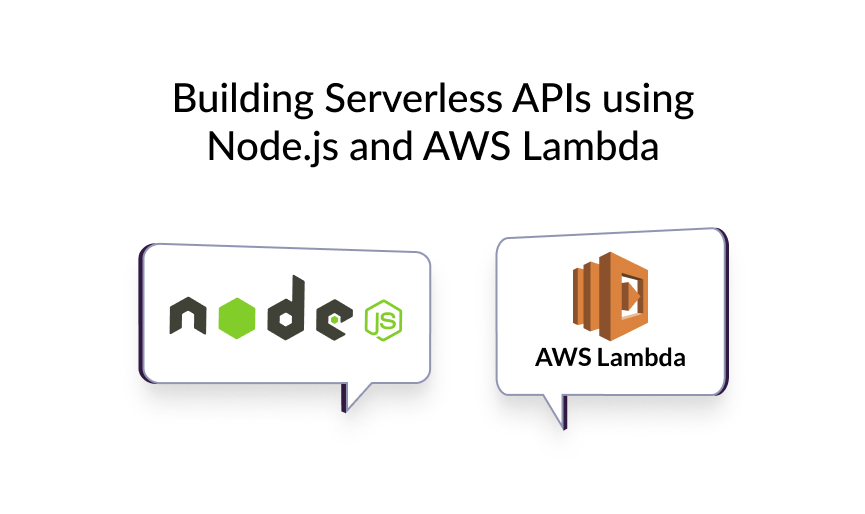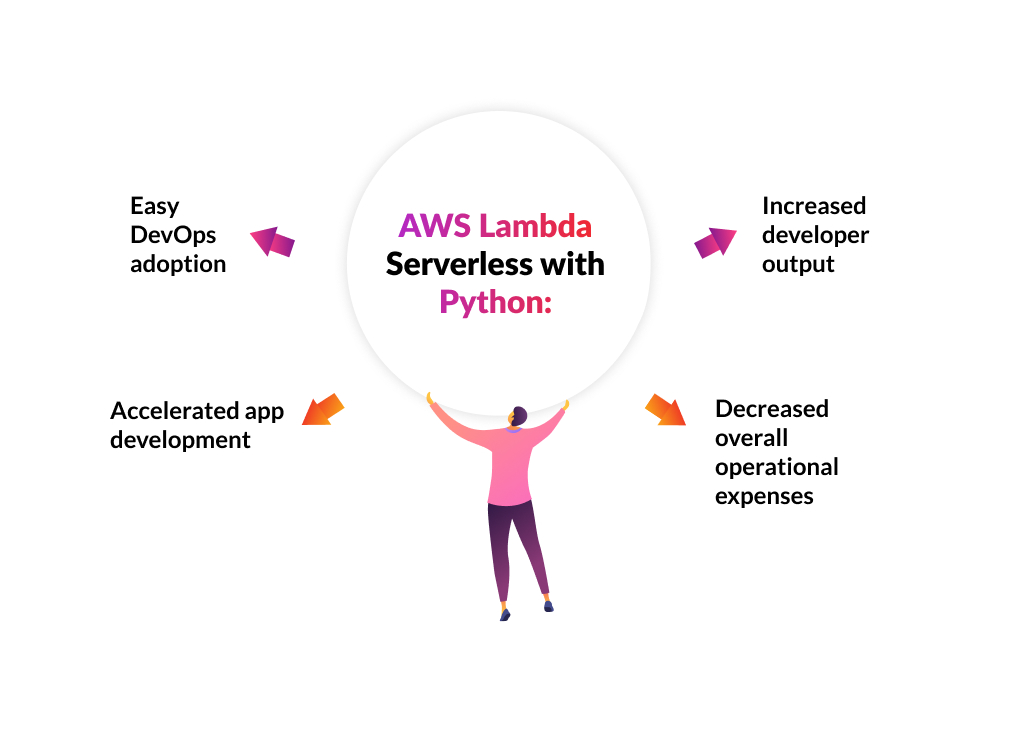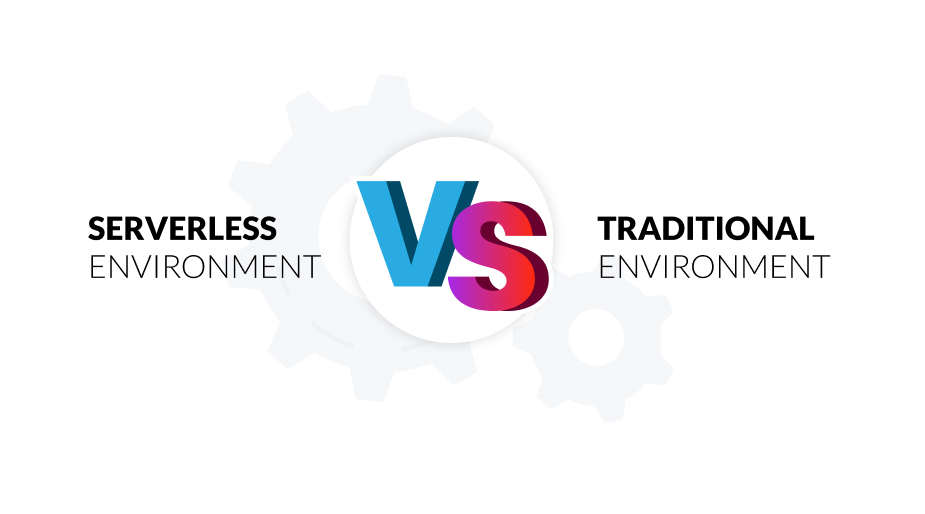Since the introduction of AWS Lambda, serverless computing has expanded dramatically. It may sound attractive to not have to run a server and only pay for the computing resources you need, not to mention countless out-of-the-box horizontal autoscaling, but how do you even get started?
The process of deploying apps in a server-independent context is simplified by a Serverless framework. Python is usually the most chosen language for producing such web-based products.
Python is an advanced scripting language with numerous libraries that facilitate the creation of apps and machine-learning algorithms. By using Python's characteristics to deploy them in a comparatively cost-effective way, one can create a serverless Python application.
Servers are still required to run the code, but they are managed by a computing platform like Amazon Web Services Lambda and are insulated from the programmer. Since the introduction of AWS Lambda, the term "serverless" has gained a lot of popularity. Could Lambda offer a method for deploying Python WSGI apps that lowers the cost, complexity, and administrative burden? Let's take a look.
Building Serverless APIs using Node.js and AWS Lambda
Since it has been available for a while, AWS Lambda has been the most widely used platform for creating with serverless technology. AWS Lambda is a form of Function-as-a-Service (FaaS) solution that enables code execution on request in response to actions or demands that have been preset. Programmers can create and deploy Lambda functions using Node.js and AWS SAM, Python or other open-source frameworks.

The Advantages of Serverless
- Less expensive when you take into account the decreased requirement for Quintagroup's employed people to install and maintain infrastructure over time and the pay-per-usage billing model, which allows for zero-hourly costs during times of low traffic.
- Development speed significantly increases since it is much simpler to assemble solutions and launch them in production.
- Increased uptime because the cloud handles all of your service management needs for you and performs better under unforeseen pressure.
Microservices versus Serverless Architecture
Serverless defines the internal structure of the program, whereas Microservices refers to how to build your application at a macro scale. A serverless application may or may not adhere to the concepts of microservices (although this is frequently the suggested course of action). All, some, or none of the microservices in a microservices' architecture may be created utilizing serverless technology.
What Is the Main Benefit of Serverless Architecture?
When developing online applications, only a handful of use cases where Serverless Architectures are not a possibility. Everything has to do with the accessibility and development of managed cloud services. Many businesses even use a hybrid strategy, where they develop as much Serverless as they can and use other solutions to fill in the gaps.
The Main Attributes of Python
- Easy to comprehend and learn: Python offers a setting that simplifies automation and development processes. Open-source accessibility makes it a reachable platform for newcomers to start using.
- Vast Community of like-minded people: As one of the most widely used languages and an open-source platform, Python has generated enormous online forums that offer ongoing updates for libraries and plugins. New developers can also get assistance and advice from this group.
- Strong Framework: Python's straightforward syntax and use of English keywords make it a strong option to develop a project. In contrast to other programming languages, the management of exceptions and restrictions is improved. Due to its robustness, adaptability, and suitability for machine learning and application development.
AWS Lambda Serverless with Python

Python code can be executed using AWS Lambda. Python runtimes for processing events are offered by Lambda. The Python SDK (Boto3) environment in which your code is running uses credentials from a role in AWS Identity and Access Management (IAM).
- Easy DevOps adoption due to the decreased necessity for developers to explicitly explain the prerequisites for operation.
- Accelerated app development through the use of BaaS services from outside sources
- Increased developer output due to the offloading of repetitive server configuration and management duties.
- Overall operational expenses are decreased because personal servers are no longer necessary because serverless models only charge for what is used, saving money.
Serverless technologies will continue to gain momentum as time goes on because businesses are constantly looking to develop new apps; consequently, the demand for developers increases as well.
Serverless Environment VS Traditional Environment

Standard Web Request
A typical format for interacting with a standard web server is as follows:
- A web server such as Apache or NGINX monitors events as they occur.
- The Web Server Gateway Interface (WSGI) environment is then established on the server.
- This is transmitted to a program, which will handle the request.
- The client then receives the response from the web server.
- The web server picks up again.
This strategy has some disadvantages. For one, this system will handle the requests as they came in if there is a significant increase in traffic. The page will appear to be down if the end consumers are behind in the line, they experience a delay. Visitors who join the line midway or later have extremely slow loading speeds. Furthermore, the web server is left in the inactive mode it isn't handling a request, squandering important resources that may be put to better use.
Web Request without a Server
Each request has its own server in an infrastructure that uses serverless technology. The function is executed by the server, and then it is promptly deleted.
In the case of a serverless architecture:
- An API Gateway receives the request.
- Using Velocity Template Language, the API request is converted to a dictionary (VTL).
- There is a server setup.
- The dictionary is then transformed by the server into a regular Python WSGI and supplied to the application.
- It is returned by the application and sent through the API Gateway.
- The server gets wiped out.
This infinite scalability makes serverless infrastructure a boon for both small breadth projects like microservices, APIs, IoT projects, or chatbots, but also for larger traditional enterprise content management systems like Django as well.
Wrapping Up
Finding the ideal employee is always a struggle for enterprises, big corporations, and new initiatives. You won't squander time by using Quintagroup's services. You may find top Python and Node.js developers and consultants with Quintagroup. Contact our vetted experts to build your project, examine its code, or resolve any issues you may have.
